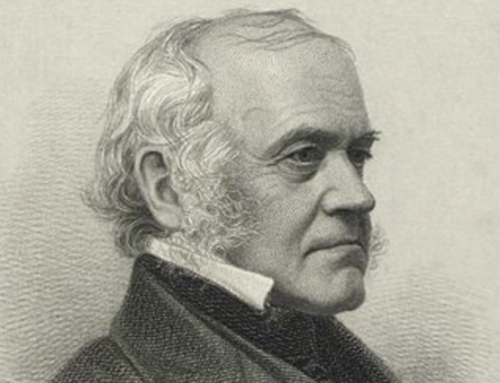Within the liturgy, within our academic life, within our hard work in serving the poor in a needy parish, we are seeking in our own small way to take the Benedict option. Like St Benedict we’re not trying to change the whole world. We’re simply doing what we can with what we have where we are.
 I first encountered the Rule of St Benedict while I was a student at Oxford. I had enrolled to train as a priest in the Church of England, but a Catholic woman in the United States who had befriended me wrote and suggested I visit a Benedictine monastery.
I first encountered the Rule of St Benedict while I was a student at Oxford. I had enrolled to train as a priest in the Church of England, but a Catholic woman in the United States who had befriended me wrote and suggested I visit a Benedictine monastery.
She didn’t quite understand that for a boy from Bob Jones University, monasteries and convents were one of the big dark secrets of the Catholic Church. The monks and nuns crept around in long black robes in huge, old buildings that looked like something out of the Addams Family, and the alarmists told us that the convents and monasteries were connected by underground tunnels, and that the monks and nuns would meet down there… and NOT for prayer meetings!
Well, I’m not exaggerating that much. Nevertheless, the idea of a monastery was alien, but admitting that I was attempting to get an education, off I went during a cold and dreary English Lent to visit Douai Abbey in Berkshire.
It was an enlightening and delightful visit, and I went back during the summer and many times hence. Then in 1987, I went on a hitch hiking pilgrimage from England to Jerusalem and stayed in Benedictine monasteries all across France and Italy and in the Holy Lands. On becoming a Catholic I also became a Benedictine oblate.
When Rod Dreher published The Benedict Option, I was eager to see his thoughts on some conclusions I had already come to: that a renewal of monasticism would plant the seeds for an eventual renewal of the Christian faith and subsequently a renaissance of Christian culture. Dreher made some excellent observations about our decaying culture and some spot-on ideas for a Benedictine-style renewal.
Dreher has been criticized for saying that we should all opt out, grow long beards, head for the hills, and get chickens and goats. To make that criticism is to misunderstand both Dreher and the Benedictine tradition. Benedictines don’t opt out or hunker down waiting for an apocalypse. They are simply realistic and understand that when things reach a particular state of societal breakdown, there is an accompanying breakdown in rational discourse and conscientious dialogue. Where there is social anarchy there is philosophical anarchy and spiritual chaos.
Realizing this, St Benedict and his followers down the ages have simply got down on their knees, then rolled up their sleeves, and got to work doing what they can with what they have, where they are. Without grumbling or being paranoid and apocalyptic they simply get on with it. A friend, observing my attraction to the Benedictine life once observed, “That’s the Mennonite in you. Those monks are just Catholic Mennonites!”
He wasn’t far wrong. My heritage is Mennonite. The first Longeneckers in the New World were Swiss Mennonites. The Anabaptist sects certainly do have a Benedictine spirit. They too see the world around them, and without a trace of desperation, without jeremiads, anger, and fear they simply get on doing what they can, all the time hoping for the best and sometimes expecting the worst.
Therefore, as a priest in a small parish in the bad part of town I asked myself how my commitment as a Benedictine oblate might influence our parish life. The pattern for the Benedictine life is structured around three vows and three tools. The three vows are for obedience, stability, and conversion of life. The three tools are a way of life centered on reading, prayer, and work.
The root word of obedience is “obedere”—to listen. In the midst of a busy, hectic world the parish should be a place where people can stop and listen. They should listen to the priest, but they should also listen to one another, listen to church teachings, and listen to the Lord. Listening and discerning the way forward brings about a style of leadership that responds to the voice of the people and the Lord—not one in which Father imposes his will or continually foists “good ideas” on everyone.
When it comes to stability, we try to emphasize that folks should make a commitment to our parish and stick with it. St Benedict talks about a type of monk called a “gyrovague,” who skips from one monastery to another, never staying put in one place. Parish-hopping and shopping is a similar plague in parish life.
Conversion of life means not simply an evangelical-style personal conversion experience, but the conversion of one’s whole life, and in the parish setting a conversion of every aspect of parish life to conform to a spiritual mission of prayer and action.
The Benedictine life is divided into segments of prayer, work, and reading. The three are intertwined like the strands of a braided rope. Prayer is work. Reading is Work. Reading is Prayer. We are blessed to have a K4-12 parish school so the three tools of prayer, reading, and work can be integrated in the lives of our families every day.
One of the reasons we recently added grades 9-12 to our parish K4-8 school and shifted to a classical curriculum is so that we can continue the melding of work, prayer, reading with a life of obedience, stability and conversion of life. The success of this expansion is encouraging as the school enrollment has gone from less than 100 to more than 300, and the parish is embarking on an ambitious project to build new school and parish facilities to replace the 70-year-old, cheaply built structures we now occupy. To get a glimpse of the project, visit the website here.
Now some laypeople in Greenville are adding to this educational opportunity by starting Rosary College—a two-year, Catholic junior college that will give our students an affordable head start in their college education. Teaming up with fellow Imaginative Conservative contributor, Joseph Pearce, we will attract local, college-aged students, online participants, and older Catholics who are looking for solid adult educational opportunities.
Therefore, within the liturgy, within our academic life, within our hard work in serving the poor in a needy parish, we are seeking in our own small way to take the Benedict option. Like St Benedict we’re not trying to change the whole world. We’re simply doing what we can with what we have where we are.
The result so far has been the growth of a dynamic and vital parish life. Young families are attracted to this practical blend of worship, prayer ,and work, and our lives are full, joyful, and active. Whether we are planting seeds that will bear rich fruit in the future remains to be seen, but the fruit of our efforts now is positive and full of hope, and that is a great gift in a society which in so many ways seems on the brink of desperation and despair.
The Imaginative Conservative applies the principle of appreciation to the discussion of culture and politics—we approach dialogue with magnanimity rather than with mere civility. Will you help us remain a refreshing oasis in the increasingly contentious arena of modern discourse? Please consider donating now.
The featured image is a statue of St. Benedict, courtesy of Our Lady of the Rosary church.







Leave A Comment